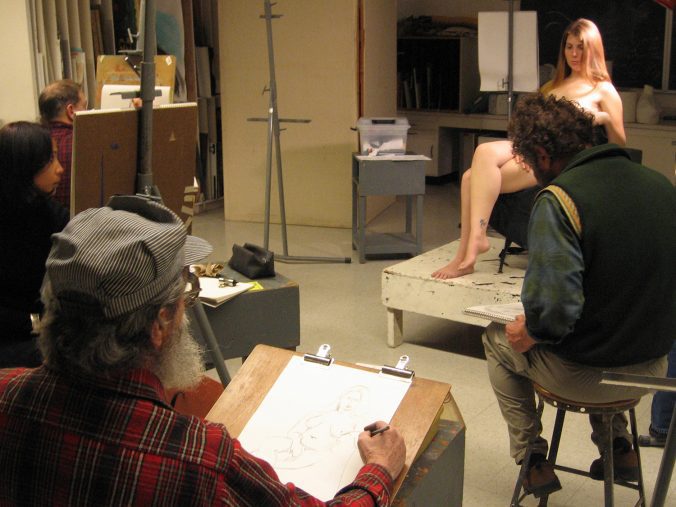The atelier provides classical training in traditional drawing and painting techniques, using pencil, pen, charcoal and dust for drawing, and oil, watercolor and gouache for painting.
Instruction philosophy at the atelier is based in a clear, problem-solving approach- there is a right and a wrong way to do things, but only so far as some techniques are better solutions to problems, and others are not. Students may test themselves against a series of kata or training forms meant to practice mastery of one specific skill. There is no point in learning didactic rules for the sake of rules, but there very much is a better or worse approach to solve various problems. Criticism is direct and pointed, but should never be abusive or discouraging. A good teacher has no need to “prove” themselves to be more skilled than their students– they simply are or are not.

There is an enormous amount of very bad art instruction in the world, either taught by insecure, emotionally abusive masters, or by well-meaning and encouraging teachers who don’t actually provide the skill-level, feedback, or discipline that students require to improve. We strive in all of our class groups to be both masterful, but also supportive, and focused on the student’s individual struggles and needs. Students will improve their abilities. If they do the work, they will improve those abilities very quickly.
Drawing or painting at a high level requires an artist to master a series of “lenses”– familiar drawing concepts like perspective or proportion, but also less familiar ideas like color saturation vs desaturation, or sculptural form theory. Making images at a high level, or drawing realistically out of one’s head with no reference at all, requires the artist to use 20 or 30 of these “lenses” simultaneously.
The only way to acquire these skills is one at a time, but with good mentorship and practice, anyone can learn to draw or paint at a very high level.
The Drawing and Painting program cycles throughout the year, moving from skill to skill, and continues indefinitely, or as long as the student wishes to pursue.
As with all classical training, the primary focus for skill development is on the human portrait and figure, but other subjects like animals and landscape may also be explored if students have an interest.
Any apprentice candidate should have a basic idea of how to draw and be accustomed to drawing regularly. Usually a beginning art class is sufficient preparation. Beyond that however, students of all levels, from late beginners to advanced professionals can find valuable additions to their skill set.
Drawing and Painting sessions are also available online.
